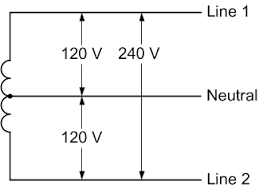Adamjamma
Senior Member
- Location
- Jamaica and london
Another problem here is the 110 gear and the way it is powered here.. they actually, in the bs7671, call it a center tapped at 55 hz system...I’ve almost given up trying to explain split phase to UK electricians, it’s not something that is regularly used over here. Farms in the middle of nowhere are the most likely places to find it.
UKPN (UK Power Networks) stores inventory only list a few 250V→N→250V transformers as approved for installation.
Personally I’ve never come across them but I’ve had a few phone calls asking for help.
but, if the system used in the sites all follow that rule, to provide what the tools see as single phase 110v... by center tap 55 hz, with two live wires, one acting as neutral, then why am I told Time and time again that to run European single phase 240 gear in the USA I need a step up adapter, rather than simply running it like we do a stove in the USA, the two lives from a double breaker to the line and neutral of the plugs?
And alos, why was I told running a step down converter is actually illegal for supplying 110 volts... was told it is illegal because the voltage is above the 55 hz...


